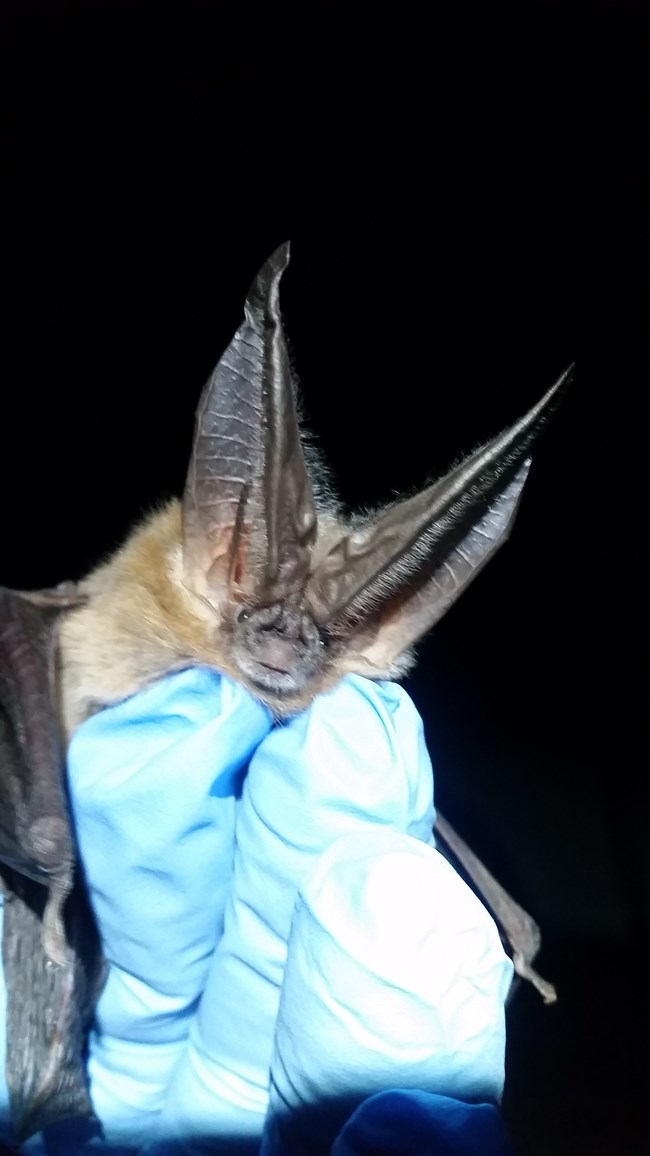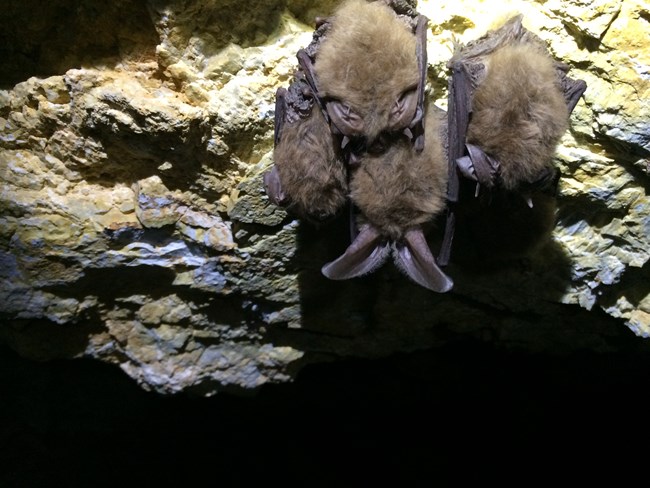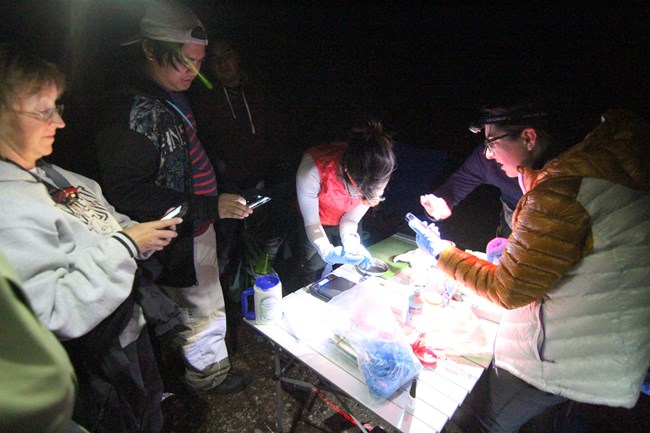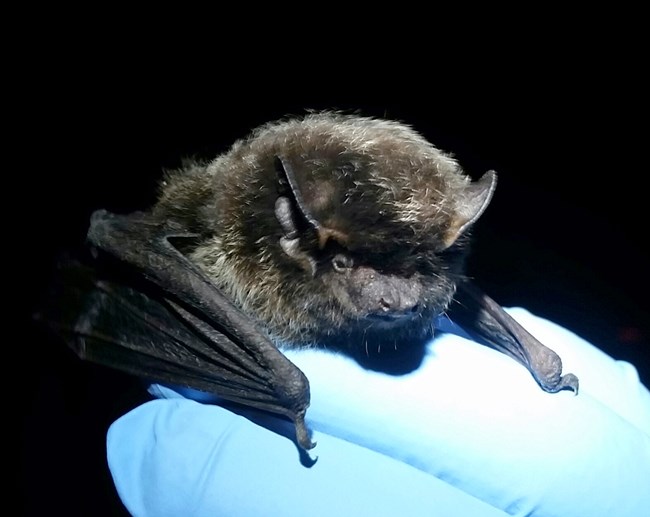Part of a series of articles titled The Midden - Great Basin National Park: Vol. 16, No. 2, Winter 2016.
Article
Bat Research in Great Basin National Park: A Year in Review
This article was originally published in The Midden – Great Basin National Park: Vol. 16, No. 2, Winter 2016.

NPS Photo
Introduction
Several threats to the populations of North American bats have been identified in the recent decade, mainly White Nose Syndrome, wind turbines, and habitat loss. Bats in the Great Basin region are insectivores, many of which can eat up to their own body weight in insects in a single night. This provides the valuable ecosystem service of suppressing agricultural pests, estimated to be billions of dollars a year in value. Due to the difficulties in studying a small, volant, nocturnal animal, and the wide-spread misinformation in the past concerning how important bats are in functioning ecosystems, very little is known about their ecology, population sizes, and habitat use. Recently, efforts have been made to obtain baseline data on bat populations and to clarify aspects of their ecology before the consequences of these aforementioned threats manifest. Relatively intact ecosystems, such as those found on protected public lands, offer an ideal landscape for such studies.
Acoustic Monitoring
Recording the echolocation calls of bats is a useful tool that requires less effort than captures. Variation between species in call characteristics and frequencies allow biologists to determine species richness and habitat utilization. We continued acoustic monitoring initiated in 2015 for a second year, surveying stationary sites along transects in Lehman Creek and Snake Creek. This project was designed to survey the full elevational gradient available, from Baker, NV and Garrison, UT (ca 5,300 ft) to Wheeler Peak (13,063 ft), with replicate sites at each elevational increment.

NPS Photo
Trapping and PIT tagging
Trapping efforts this summer focused on our local species of interest, the caverniculous Townsend’s big-eared bat (Corynorhinus townsendii). We captured these bats with mist nets and harp traps at their cave roosts within and adjacent to the park, with the goal of tagging as many as possible for long term monitoring. Passive Integrated Transponder (PIT) tags utilize the same technology as the microchips used in pet dogs and cats in urban areas, or automatic key cards in some hotels. They have the benefit of not requiring a battery, thus are indefinite in duration of functionality. The disadvantage to this tag is that the bat must pass by an antenna or a hand-held scanner to detect the tag, unlike radio tags that can be tracked from longer distances. This remains very useful for cave-roosting bats when an antenna can be installed around the cave entrance as we have done at Lehman Cave, or if the bat is re-captured and can be scanned in hand. This project will provide novel information about the timing and fidelity of roost use by bats in the park, as well as long term data which may reveal the longevity and further life history information of this and other bat species that can live over 15 years. This year mist net trapping was conducted for 16 nights over nine sites (four foraging sites, five roosts) in and adjacent to the park. A total of 201 individuals were caught, most of which were PIT tagged, comprising six different species.

NPS Photo
Many North American bats hibernate during winter months. For this they must find suitable habitat to meet the species-specific microclimate and metabolic demands for dormancy. It is in these hibernacula and dormant states that bats are the most vulnerable, especially in eastern North America, to the White Nose Syndrome causing fungus (Pseudogymnoascus destructans). Thus it is of high importance for park researchers to determine the over-wintering habitat for our bats.
Winter cave and mine surveys are essential for obtaining direct counts of bats in known hibernacula, however finding new winter roosts proves to be more difficult. Telemetry or radio-tracking is a method that has been employed by a wide range of wildlife biologists for decades. Radio tags used on bats weigh less than a third of a gram and are equipped with a small flexible antenna that emits a radio signal on a specific frequency. This signal is detected by the researcher with a radio receiver and an antenna in the form of an audible ‘beep’, which becomes louder as proximity to the tagged animal increases.

NPS Photo
We would like to thank everyone who assisted and/or volunteered with fieldwork this season; we could not have done it without you!
Last updated: March 13, 2024
